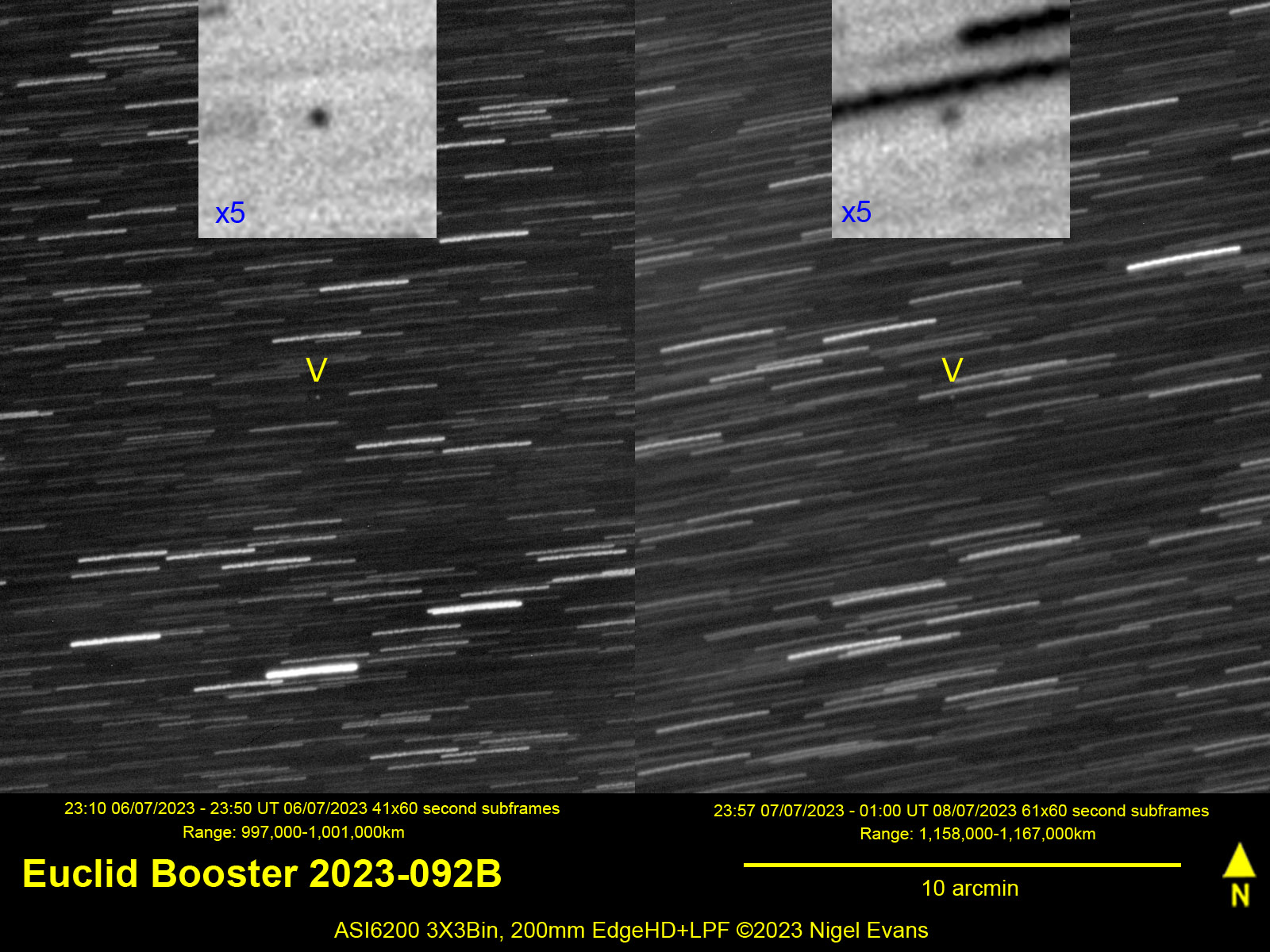
Orwell Astronomical Society (Ipswich)
Booster Rocket From Euclid Launch Vehicle, 06-08 July 2023
The Euclid mission of the European Space Agency (ESA) is designed to create a map of the large-scale structure of the Universe across space and time. It will observe billions of galaxies, to a distance of 10 billion light-years, across more than a third of the sky, and will explore how the Universe has expanded and how structure has formed over cosmic history, revealing more about the role of gravity and the nature of dark energy and dark matter.
Euclid was launched from Cape Canaveral on 01 July 2023 on a Falcon 9 rocket, towards orbit around the Lagrangian point L2 (opposite the Sun in the sky, 1.5 million km distant from Earth).
A craft such as Euclid is far too faint for my telescope to image directly, and I therefore need to resort to an indirect technique. If I can establish how the craft moves among the background stars, I can align multiple frames on it; stacking the frames will then reveal the craft as a dot (if it is sufficiently bright) and the stars as trails.
Euclid typically moved at some 3 arcseconds a minute, limiting the exposure time of frames. I was able to use an exposure of 60 seconds, which is my usual preferred duration. (Formerly, I have gone down as low as 10 seconds for fast-moving objects.) A longer exposure would result in the light from Euclid being stretched into a faint streak, which could be lost in the background noise.
For reasons unknown, ESA did not publish a trajectory for Euclid, and neither was it covered initially by the JPL Horizons system (it is now). I therefore used details from Project Pluto to provide the trajectories of both Euclid and its booster rocket. On the evenings of 06 and 07 July, I tried to record the pair (not together as they are too far apart). The gibbous Moon caused problems, brightening the sky considerably. The booster was predicted to be around magnitude 16.7 but the spacecraft, although closer to Earth, about magnitude 18. The bodies attained a maximum altitude of approximately 30° in the south.
Unfortunately, it seems that the spacecraft was just too faint for my setup to record. I had more success with the booster rocket, imaging it on both nights as it exceeded a distance of 1,000,000 km. Below is a composite image created from observations on both days - although the booster appears as just a dot, it is a faraway man-made dot!
Nigel Evans